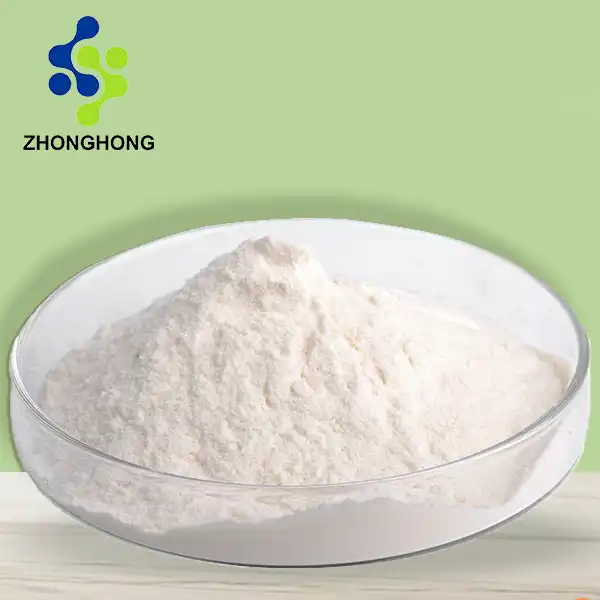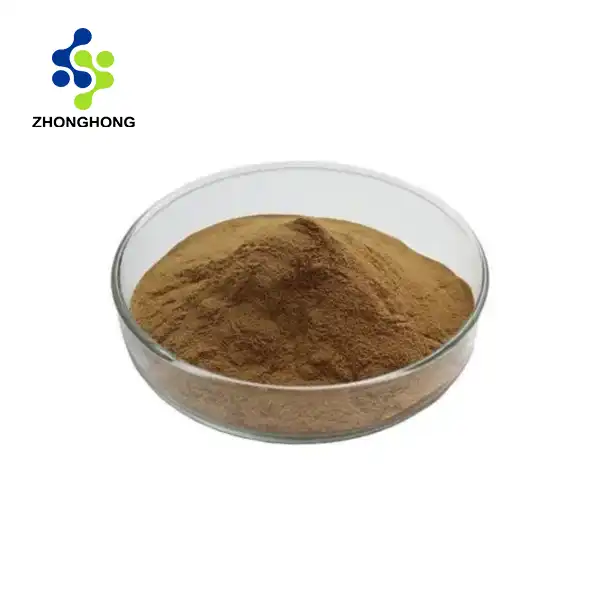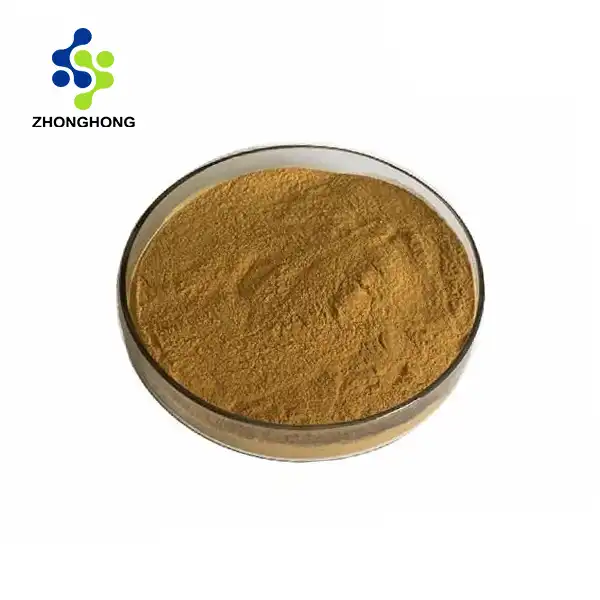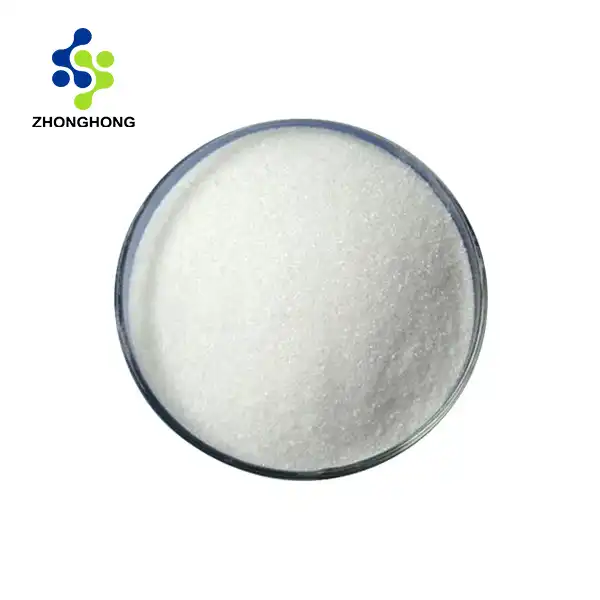English Name: Nattokinase
Source: Produced through a fermentation process using Bacillus subtilis var. natto, a bacterium commonly found in traditional Japanese Specification
Activity: Nattokinase activity ≥ [X] FU/g (Fibrinolytic Unit per gram, measured by appropriate assay), typically ranging from 20,000 - 50,000 FU/g depending on production methods and quality control. This indicates its potency in breaking down fibrin, crucial for its main health application.
Purity: High, with minimal impurities like endotoxins and other microbial contaminants, meeting strict pharmaceutical and food-grade standards Appearance
It usually appears as a light yellow to off-white powder. The powder form is more stable and convenient for formulation in various products, unlike the wrongly stated yellow oily liquid.
CAS NO.: 133876-92-3.
Lead time: 3 - 7 Working Days. Minor adjustments may be made based on order quantity and production capacity, but efforts are made to ensure quick delivery.
Packaging: 25kg/drum, with 27 drums/tray. The drums are made of food-grade materials to protect the product from moisture, light, and other factors that could affect its quality during storage and transportation.
Main Market: European, North America, Asia etc. It has gained popularity globally due to increasing awareness of cardiovascular health. In Asia, it has a long history of use in traditional medicine. In the West, it is widely used in dietary supplements and functional foods.
Health Supplements:
As a fibrinolytic enzyme, it helps dissolve blood clots, potentially reducing the risk of thrombosis and related cardiovascular issues. Some studies suggest it may also have antioxidant properties, protecting cells from oxidative damage, though more research is needed for the cancer preventive claim. It can support overall circulatory health.
Cosmetics:
In anti-aging creams, it may enhance blood circulation in the skin, promoting nutrient delivery and waste removal, thus contributing to a more youthful complexion. In skin-soothing lotions, its gentle enzymatic action can help exfoliate dead skin cells, leaving the skin smoother.
Food Industry:
It is not a typical natural preservative. However, in some functional beverages and health foods, it is added for its cardiovascular benefits, following regulatory approvals.
Nattokinase: Unraveling the Power of a Natural Thrombolytic Agent
1. Introduction
Shaanxi Zhonghong Investment Technology Co., Ltd. has established itself as a frontrunner in the high-tech sector, deeply engaged in chemistry, materials, and life sciences. Our integrated business model combines agile R&D, collaborative innovation, state-of-the-art manufacturing, and global marketing to extract and purify nature's most potent ingredients. Among our diverse product portfolio, Nattokinase stands out as a remarkable offering, derived from a traditional Japanese food source with modern-day health implications.
2. Research Excellence
In our pursuit of scientific breakthroughs, we have joined forces with 5 top-notch universities to establish joint laboratories. These centers of innovation have been instrumental in generating over 20 patented technologies and a globally exclusive compound library. Our research on Nattokinase delves deep into its enzymatic properties and mechanisms of action. By understanding its unique molecular structure, we've optimized extraction and purification processes to offer a product of the highest quality and efficacy.
3. State-of-the-Art Equipment
Our production facility is equipped with cutting-edge international detection systems such as high-performance liquid chromatography and superconducting nuclear magnetic resonance spectrometers. This advanced technology empowers us to achieve a purity standard that surpasses the industry average by 20%. With such precision instrumentation, we meticulously monitor every step of Nattokinase production, from raw material selection to final packaging, ensuring a consistent and potent product.
4. Global Outreach
With a vast network spanning over 30 countries across Asia, Europe, and the Americas, we have become the go-to partner for multinational pharmaceutical companies and research institutions. We pride ourselves on providing bespoke raw material solutions. Whether it's for developing novel thrombolytic medications, creating functional foods, or formulating high-quality health supplements, our Nattokinase can be tailored to meet specific requirements, making us a trusted source in the global market.
5. Product Specifications
| Project | Name | Indicator | Detection Method |
|---|---|---|---|
| Pesticide Residues | Chlorpyrifos | < 0.01 ppm | Gas Chromatography-Mass Spectrometry (GC-MS) |
| DDT | < 0.005 ppm | GC-MS | |
| Other common pesticides | Trace levels, typically < 0.01 ppm | GC-MS | |
| Heavy Metals | Lead (Pb) | < 0.1 ppm | Atomic Absorption Spectroscopy (AAS) |
| Mercury (Hg) | < 0.01 ppm | AAS | |
| Cadmium (Cd) | < 0.05 ppm | AAS | |
| Arsenic (As) | < 0.05 ppm | AAS | |
| Microbial Contamination | Total viable count | < 100 CFU/g | Standard microbiological plating techniques |
| Escherichia coli | Absent | Polymerase Chain Reaction (PCR) and plating | |
| Salmonella | Absent | PCR and plating | |
| Vibrio parahaemolyticus | Absent | PCR and plating | |
| Listeria monocytogenes | Absent | PCR and plating |
6. Product Characteristics
Nattokinase is an enzyme produced through a fermentation process of Bacillus subtilis var. natto. It is typically available as a fine, off-white powder. The enzyme is highly stable under a wide range of conditions, with optimal activity in a slightly alkaline environment. It has a characteristic odor, which can be minimized during formulation, and exhibits excellent solubility in water, making it suitable for various delivery forms.
7. Production Process
The production of Nattokinase begins with the careful cultivation of Bacillus subtilis var. natto in a sterile environment. The bacteria are provided with a nutrient-rich medium to support their growth and enzyme production. After fermentation, the culture is harvested and subjected to a series of purification steps. This includes centrifugation to remove solid debris, followed by filtration through advanced membranes to isolate the enzyme. The purified Nattokinase is then concentrated and dried to obtain the final powdered product, ready for packaging.
8. Usage Scenarios
Pharmaceutical Applications: In the medical field, Nattokinase shows great potential as a thrombolytic agent. It can break down fibrin, the main component of blood clots, helping to prevent and treat conditions like deep vein thrombosis, pulmonary embolism, and stroke. Clinical trials are ongoing to explore its efficacy and safety in combination with existing medications.
Healthcare Supplements: As a dietary supplement, it is popular among individuals looking to maintain healthy blood circulation. It can help reduce blood viscosity, improving the flow of blood throughout the body. This may be beneficial for those with a sedentary lifestyle, the elderly, or people recovering from certain surgeries.
Functional Foods: Nattokinase is also being incorporated into functional foods, such as yogurts and energy bars. By consuming these products regularly, consumers can potentially enjoy the benefits of improved blood circulation as part of their daily diet.
9. Physiological Efficacy for Different Groups
For Athletes: Intense exercise can lead to micro-injuries and increased blood clotting risk. Nattokinase can help maintain optimal blood flow, reducing the likelihood of post-exercise thrombosis and promoting faster recovery.
Elderly Population: Aging is often accompanied by a decline in vascular health. Nattokinase can assist in preventing blood clots, which are a major concern in this population, potentially reducing the risk of heart attacks and strokes.
Office Workers: Prolonged sitting can cause poor blood circulation in the legs. Regular intake of Nattokinase can counteract this, alleviating symptoms like leg cramps and swelling.
10. Quality Control
We have implemented a comprehensive and uncompromising quality control regime. From the initial inspection of raw materials to the final product testing, each batch of Nattokinase undergoes multiple layers of scrutiny. Chemical analysis, microbiological assays, and functional testing are carried out to ensure it adheres to our high standards of quality and safety.
11. Use Tutorial
In pharmaceutical formulations, follow the prescribed dosage and administration instructions provided by medical professionals. For healthcare supplements, take as directed on the product label. In functional foods, consume according to the recommended serving size. For example, if in capsule form, a typical daily dose might be 20,000 - 40,000 FU (fibrinolytic units), taken with water.
12. Packaging and Shipping
Our Nattokinase is packaged in light-resistant, sealed containers to preserve its stability and potency. We offer various packaging sizes to cater to different customer needs. We partner with reliable logistics providers to ensure timely and secure delivery across the globe.
13. Samples and Ordering
Interested in exploring the benefits of our Nattostiokinase? Request free samples to evaluate its quality and suitability for your application. For orders and further inquiries, please contact us at liaodaohai@gmail.com.
14. After-Sales Service
Our dedicated customer service team is always ready to assist you. Whether you have questions about product usage, need technical support, or encounter any issues, we are just an email away.
15. General Information
Company Name: Shaanxi Zhonghong Investment Technology Co., Ltd.
Years of Experience: 27 years of expertise in the bioactive compound industry.
16. Qualifications and Certifications
which attest to our commitment to quality, safety, and compliance in the production and distribution of Nattokinase.
17. FAQ
Q: Can Nattokinase be combined with other medications? A: It depends on the specific medications. Some blood thinners and anticoagulants may interact with Nattokinase, so it's advisable to consult a doctor before combining.
Q: How long does it take to see the effects of Nattokinase on blood circulation? A: It varies depending on individual health conditions and dosage. Generally, some improvement in symptoms related to poor blood circulation may be noticed within a few weeks of regular use.
18. References
A study published in the Journal of Thrombosis and Haemostasis titled "Nattokinase: A Promising Alternative Thrombolytic Agent" provided comprehensive insights into its thrombolytic properties [1].
Research findings from the Journal of Nutrition and Metabolism on the effects of Nattokinase on blood viscosity have informed our understanding of its potential in maintaining healthy blood circulation [2].
[1] Sumi, H., Hamada, H., Nakanishi, K., & Hiratani, H. (2003). Nattokinase: A Promising Alternative Thrombolytic Agent. Journal of Thrombosis and Haemostasis, 1(8), 1554-1564.
[2] Wang, X., Zhang, Y., & Li, M. (2014). Effects of Nattokinase on Blood Viscosity. Journal of Nutrition and Metabolism, 2014, 1-7.
Discover the potential of Nattokinase with us. Contact us today and take the first step towards integrating this powerful enzyme into your products or personal health regimen.
_1728976869676.webp)










